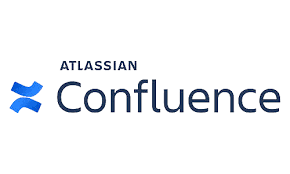Exploring Confluence: An Introduction to Collaboration and Knowledge Management
 Cloud Tuned
Cloud Tuned
Exploring Confluence: An Introduction to Collaboration and Knowledge Management
In today's fast-paced and interconnected workplace, effective collaboration and knowledge sharing are essential for driving productivity and innovation. Confluence, a popular collaboration tool developed by Atlassian, offers a comprehensive solution for teams to create, share, and organize content in a centralized platform. In this article, we'll delve into what Confluence is, how it works, and how it can benefit organizations of all sizes.
What is Confluence?
Confluence is a web-based collaboration tool that enables teams to create, share, and collaborate on content in a centralized workspace. Developed by Atlassian, the same company behind widely-used tools like Jira and Bitbucket, Confluence is designed to facilitate knowledge sharing, project documentation, brainstorming, and more. With its intuitive interface and flexible features, Confluence empowers teams to work together seamlessly and capture collective knowledge effectively.
How Does Confluence Work?
Confluence provides a versatile platform for creating and organizing content, ranging from project documentation and meeting notes to product requirements and technical documentation. Here's how it works:
1. Pages and Spaces:
At the core of Confluence are pages and spaces. Pages are individual pieces of content created by users, while spaces serve as containers for organizing related pages. Users can create pages within spaces to document projects, initiatives, processes, or ideas.
2. Rich Content Creation:
Confluence offers a rich set of content creation tools, including text formatting, tables, images, attachments, and macros. Users can easily create and edit content directly within Confluence using the intuitive WYSIWYG editor, which requires no coding or technical expertise.
3. Collaboration and Commenting:
Teams can collaborate on content in real-time using Confluence's commenting and feedback features. Users can leave comments on pages, mention specific team members, and engage in threaded discussions to provide feedback, ask questions, or share ideas.
4. Version History and Tracking:
Confluence automatically tracks version history for pages, allowing users to view and revert to previous versions if needed. This feature ensures transparency and accountability, enabling teams to track changes, review revisions, and maintain an audit trail of content edits.
5. Integration with Atlassian Ecosystem:
Confluence integrates seamlessly with other Atlassian products, such as Jira, Bitbucket, and Trello, as well as with third-party tools and services. These integrations allow teams to streamline workflows, link related content, and leverage their existing toolset within the Confluence environment.
Why Use Confluence?
The adoption of Confluence offers several benefits for organizations seeking to improve collaboration and knowledge management:
Centralized Knowledge Repository: Confluence serves as a centralized repository for capturing and organizing knowledge within an organization. Teams can create, share, and access documentation, meeting notes, best practices, and other valuable content in one place.
Improved Collaboration and Communication: Confluence facilitates collaboration and communication among team members, regardless of location or time zone. Teams can work together in real-time, share feedback, and stay aligned on projects and initiatives.
Efficient Documentation and Onboarding: Confluence provides a platform for documenting processes, procedures, and onboarding materials. New team members can quickly get up to speed by accessing relevant documentation and resources within Confluence.
Enhanced Transparency and Accountability: With version history tracking and commenting features, Confluence promotes transparency and accountability in content creation and editing. Team members can track changes, review feedback, and maintain an audit trail of content revisions.
Scalability and Flexibility: Confluence scales with organizations of all sizes, from small teams to large enterprises. Its flexible structure and customizable features adapt to the evolving needs and requirements of diverse teams and use cases.
Getting Started with Confluence
To get started with Confluence, follow these steps:
Sign Up: Create an account on the Confluence website or log in with your existing Atlassian account.
Create Spaces: Start by creating spaces to organize your content. Spaces can represent teams, projects, departments, or any other organizational structure.
Create Pages: Within each space, create pages to document projects, initiatives, processes, or ideas. Use the rich content creation tools to format text, insert images, add attachments, and more.
Collaborate and Comment: Invite team members to collaborate on pages by leaving comments, providing feedback, and engaging in discussions. Mention specific users to notify them of relevant updates or discussions.
Integrate with Other Tools: Explore integrations with other Atlassian products and third-party tools to enhance your workflows and streamline collaboration. Link related content, create cross-references, and automate repetitive tasks using integrations.
Conclusion
Confluence is a versatile collaboration tool that empowers teams to create, share, and organize content effectively. Whether you're documenting projects, capturing meeting notes, or sharing best practices, Confluence provides the tools and capabilities to streamline collaboration, improve communication, and foster knowledge sharing within your organization. By centralizing knowledge in a single, accessible platform, Confluence helps teams work smarter, faster, and more efficiently, driving productivity and innovation across the organization.
Subscribe to my newsletter
Read articles from Cloud Tuned directly inside your inbox. Subscribe to the newsletter, and don't miss out.
Written by
